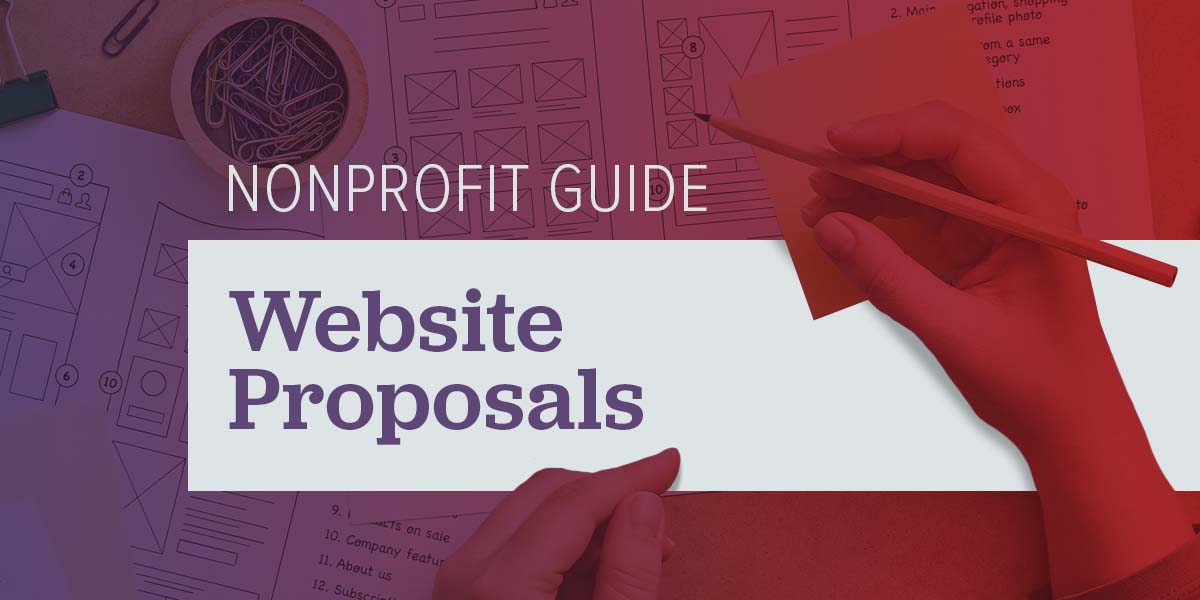A Nonprofit’s Guide to Writing a Website Redesign Proposal
Lisa Hirst Carnes | March 2023

The appearance and functionality of your website play a prominent role in your organization’s success. It’s essential that visitors have a good impression of your site. Websites that haven’t been updated for several years may be overdue for a redesign. So, how do you convince decision-makers that a website redesign is a worthwhile investment? Let’s look at some key guidelines for a website redesign proposal.
Why Your Website Matters
Making a solid first impression is crucial for building membership and donations. Before the internet, people found organizations via print ads, referrals, or radio spots. Today, almost every first impression happens online. Plus, donations are more likely than ever to be made online. A study by Blackbaud Institute found that online giving increased by 42% in the last three years. This will only grow as people get comfortable making payments on mobile devices. But, you will only see the donations you want if your website visitors have a positive experience. The following are guidelines to maximize stakeholders buying into a website redesign.
Form a Website Planning Committee
-
Web design and functionality
-
Front-end and backend development
-
Accessibility and SEO
-
Content and messaging
Educate Yourself
-
Study competitors’ websites to see what features and designs they use. Identify what is appealing and effective and what you should revise.
-
Create surveys for members and website visitors to get feedback on how the site is working.
Create a Problem Statement
-
UX issues. Issues that affect the user experience include navigability, load speed, responsiveness, and readability. If visitors can’t find what they are looking for, they are not likely to return to a site.
-
Content quality and content management system (CMS). Is your site’s content up to date? You may have posts and other content with outdated information. You may also want to look at your CMS to see if it needs rethinking.
-
Accessibility. Your website should be accessible to all people.
-
Search engine optimization (SEO). Many factors impact SEO, like meta descriptions, headers, alt tags, and more. SEO and content issues often overlap, as content quality is a Google ranking factor. But, there are other possible issues as well, such as site speed, backlinks, and social signals. While SEO can be complex, it’s not difficult to see when it’s not working.
Set Website Redesign Goals
-
Specific — If you want to improve the UX, a specific goal could be to cut the average page load time in half. Tools like Speed Lab can help you check this metric.
-
Measurable — It’s easier to achieve goals that are quantifiable. For example, “increase website traffic by 30%” is better than “increase traffic.”
-
Achievable — You don’t want to set goals that are so ambitious that you can’t reach them.
-
Relevant — The goal should help achieve the organization’s objectives.
-
Time-bound — Setting a deadline helps to focus efforts. Stakeholders will also want to see a timeline when considering a proposal.

Provide Evidence For Your Case
Provide evidence to create a sense of urgency for the project. For example, the following statistics are from Truelist’s UX Statistics 2023.
- Improving user interface (UI) can raise conversions by 200%.
- 70% of customers will abandon an online shopping cart because of poor UX.
- Investing in UX results in an almost 10,000% ROI.
- 39% of internet users will abandon a website if images take too long to load.
- 60% of shoppers use mobile devices to make buying decisions.
Set a Budget
-
Set priorities and mention any pressing issues
-
Make sure the budget is in alignment with requirements and goals
-
Offer alternatives, such as alternative service tiers for SEO and content creation
-
Point out which elements are one-time costs and which are recurring
When You’re Ready to Get Started
Many organizations find that the best way to handle a redesign project is to outsource it to an agency. ArcStone is an experienced digital agency that specializes in websites for nonprofits. Our specialties include WordPress, SEO, SEM, storytelling, and hosting. Contact us to learn more or arrange a consultation for your website redesign.
